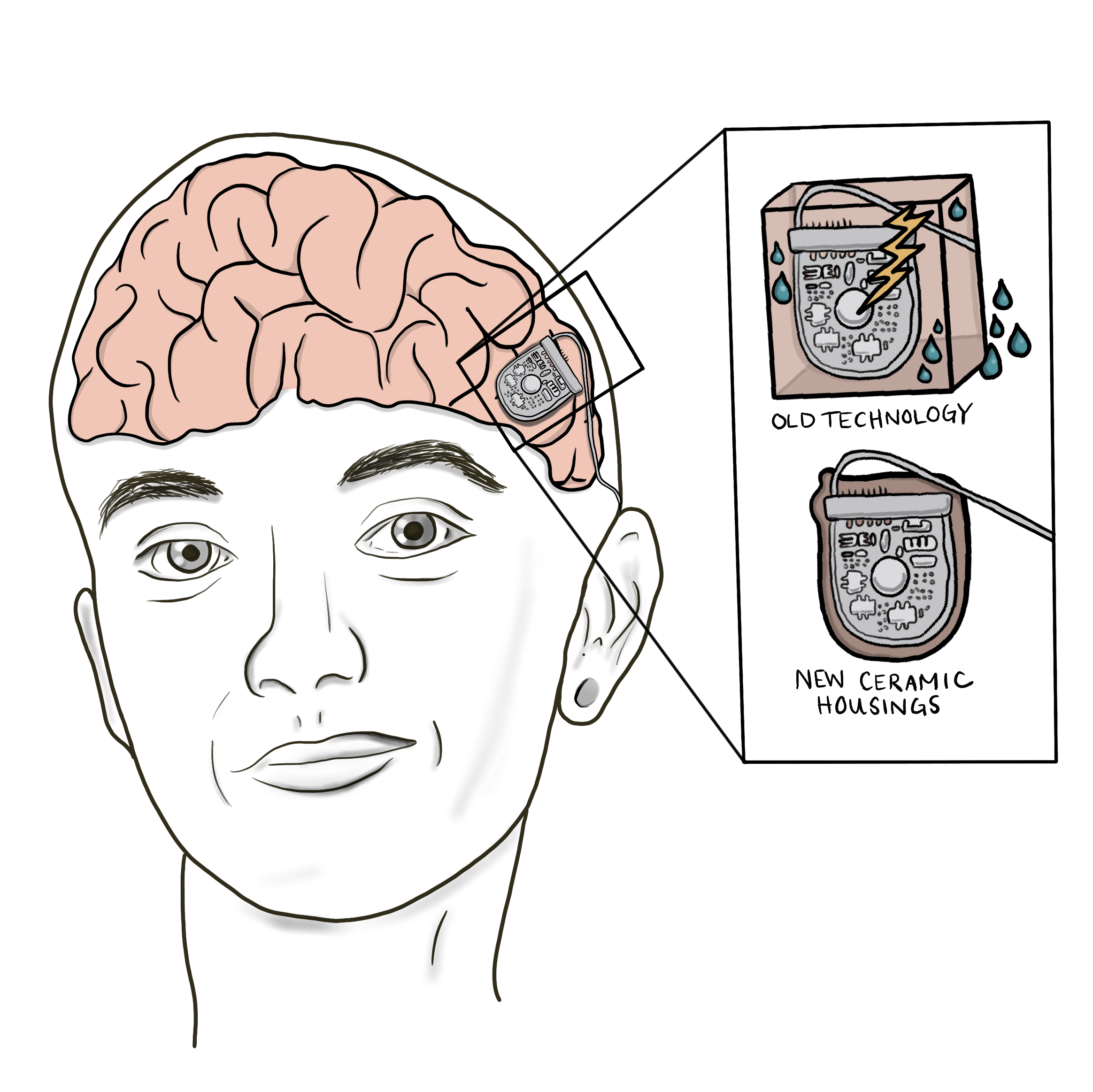
A neural implant provides life-changing benefits for the recipient, including reducing seizures and ameliorating tremors. Ideally, the implant would be a part of the brain that lasts a lifetime. But currently, implants gradually lose efficacy after only a handful of years.
Neural implants are small devices placed in precise positions in the brain to support some part of brain function. They are generally made of tiny electronics surrounded by a protective shell, or housing. The housing needs to protect the sensitive electronics and not interfere with the surrounding tissue. Titanium is commonly used for this purpose because it is durable, but the permeability of the material can let in fluid and reduce the lifespan of the device.
UCSF postdoc Konlin Shen and UC Berkeley professor Michael Maharbiz recently identified ceramic housings—manufactured using thin film technology—as the key to improving the longevity of neural implants. Ceramics are desirable for implants because they are waterproof, durable, and do not interact with the electronic components in the device. Manufacturing ceramics with thin film technology allows microscopic layers of ceramic to be deposited on the implant itself, like painting on many layers of protective coating instead of building a box. There are no gaps in which condensation can form, and the result is both a flexible and sturdy housing, which is essential for the implant to adapt to the small movements of the brain.
“[Ceramics], in theory, can last in the body for decades,” says Shen. A decades-long lifespan would mean fewer invasive surgeries and permanent relief from many brain conditions.
This article is part of the Spring 2021 issue.




